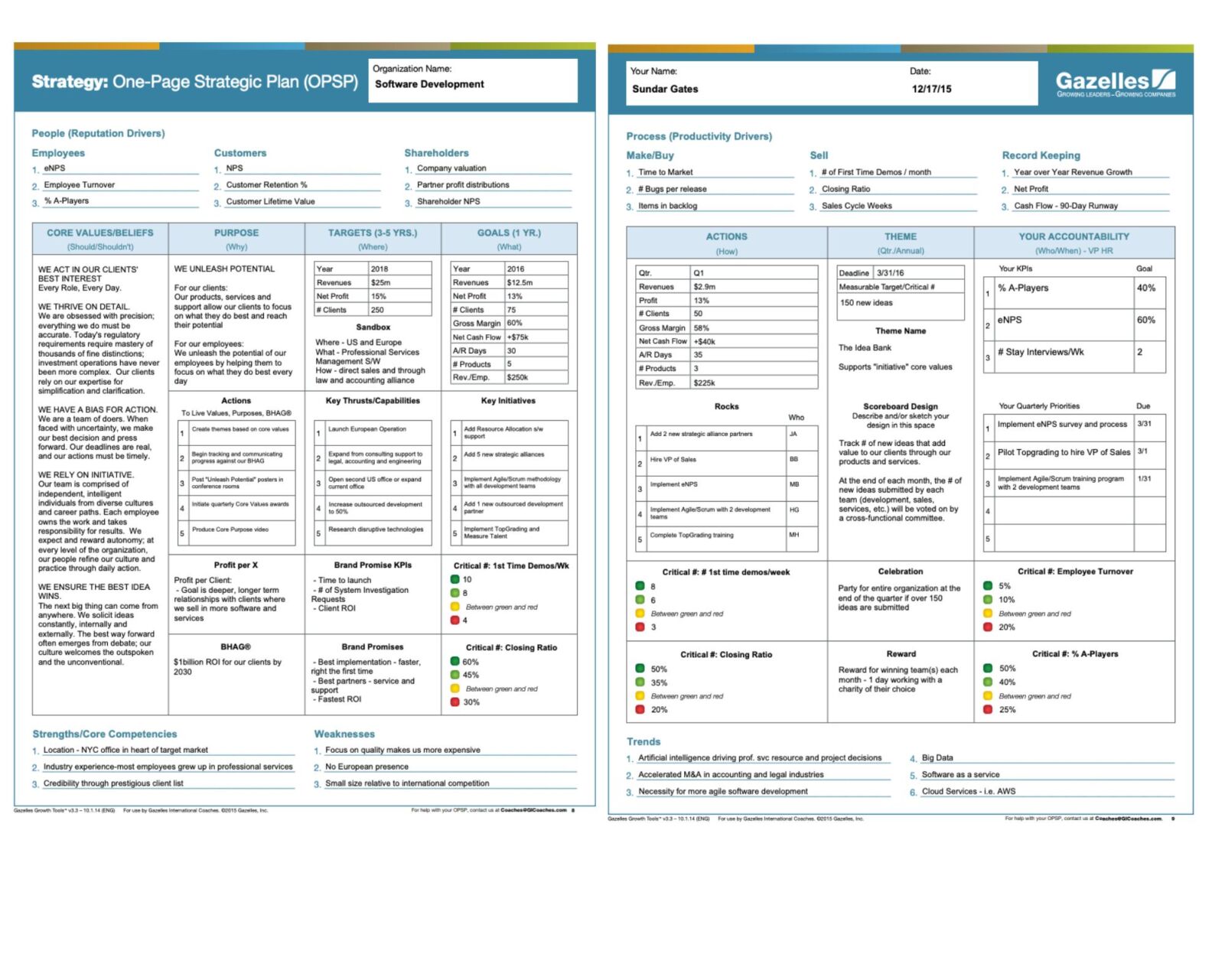Quick Summary
Successful strategic planning meetings need clear goals and real engagement. Teams that prioritise tough discussions and accountability see the best results.
Takeaways
- Clear objectives are essential for productive strategic planning meetings.
- Tough discussions should be prioritised, not avoided.
- Accountability drives real results, not just ideas.
- A focused agenda prevents wasted time and keeps meetings effective.
- Engagement from all team members leads to better decision-making.
Why Should I Hold Strategy Review Meetings?
I don’t believe you can facilitate and participate fully in any meeting. As CEO, this is particularly true of your company’s strategic planning off-site. Strategic planning meetings are the heartbeat of any successful organisation, setting the direction for the year ahead. But too often, they fall short of their potential – becoming more about talking than taking action. To truly make your strategic planning sessions work, it’s about more than setting goals; it’s about aligning your leadership team, preparing thoroughly, and engaging in an iterative process that adjusts to real-world challenges.
You can hold the annual strategy meetings in your office, but I wouldn’t. The lack of dislocation tends to lower the horizon, making the session more tactical than you want. Also, before we knew better, we would lose people; we would break for coffee, and some people wouldn’t return, once ever.
What Is the Purpose of a Strategic Planning Meeting?
The two or three-day off-site strategic meeting is the CEO’s exclusive domain. They organise and design, shouldn’t facilitate and are held accountable for the outcome. The strategy meeting holds immense importance, as it’s often the only chance in the year for the senior leadership team to dive into strategic matters at length.
Off-site strategy meetings are essential for any company that wants to succeed long-term. They allow executives to get away from the day-to-day operations and do creative thinking. By carefully designing these meetings, companies can ensure they’re candid, productive, and focused on the most critical issues. This can lead to better decision-making, faster action, and a more aligned team. This can significantly impact how employees perceive the leadership team in the short term. In the longer term, the success of these meetings can profoundly impact the business.
Off-site strategic meetings venture beyond the usual operational discussions, tackling broader questions like strategic product fit and team member development. They demand a long-term vision, extending beyond immediate concerns to a three- to ten-year horizon. The leadership team needs to be the executives’ number one team. Instead of siloed perspectives, executives must take a more holistic view across the organisation. Unlike regular operations-driven meetings, strategic planning meetings grapple with ambiguous and speculative issues and aim to challenge conventional thinking.
While off-site strategy meetings are seldom terrible, they rarely leave a lasting impact on the business. Many executives echo the sentiments of a technology company’s CEO, stating about their strategic planning session, “We went away for two days, and no one noticed.”
Despite the obvious significance of off-site strategic planning meetings, CEOs have surprisingly little guidance on designing them. We have produced plenty of advice for conducting operational meetings and facilitation, but the specifics of the strategic planning process design have remained unexplored until now.
A well-crafted off-site strategy meeting can unify leadership and impact corporate performance. With a decade of experience designing and facilitating strategic planning meetings globally, we’ve worked with diverse organisations, from pre-revenue start-ups, public sector organisations, PE-backed scale-ups and the UK’s largest private firms. We’ve developed best practices from these engagements to guide CEOs in maximising their annual strategic planning meeting.
Preparation: The Foundation of a Great Planning Session
Preparation doesn’t just set the tone for your planning session – it dictates its success. Before you walk into the room, ensure every team member has done their homework. Assign specific pre-work: reflect on the past year, identify key learnings, and consider opportunities and threats. Encourage team members to answer critical questions like, ‘What went right last year?’ and ‘What should we change to achieve our goals?’ By compiling these insights into a session workbook, you can start your meeting with a clear, data-driven foundation. We would do this in Miro and using our Stinky Fish template or our Scaling Up Leadership Alignment Survey.
By sharing the output with the CEO, sessions are tailored to address the leadership debts and encourage constructive conflict. However, keeping this information confidential from other participants until the meeting itself helps spark debate and prevent defensiveness, leading to a more dynamic and productive conversation.
Why a Business Coach Adds More Value: Tools, Insight, and Strategic Impact
While an external facilitator ensures unbiased dialogue and keeps sessions focused, a business coach takes it further—bringing proven tools, frameworks, and real-world insights that elevate strategic planning. Coaches don’t just guide; they equip your team with the right models for scenario planning, prioritisation, and accountability, turning goals into actionable steps.
Their experience helps identify blind spots, challenge assumptions, and push your team to think bigger. A coach transforms planning from a routine meeting into a powerful strategy session, driving sustainable growth and keeping your team accountable to the plan throughout the year.
Top Learnings for a Successful Strategic Planning Meeting:
The strategic planning process must have clear objectives and a focus on a manageable number of key initiatives. We find a process structured around completing or revising the One Page Strategic Plan (OPSP) Template, and some deep work on the leadership can be achieved in two or three days.

Click here to download the full PDF version of the OPSP template.
Click here for a filled-in example of the OPSP template for inspiration.
Focus and Clarity:
- Less is More: Avoid overwhelming agendas and limit the number of key initiatives. Focus on the most critical issues for a productive discussion. We use 90-minute blocks and only schedule four sessions per day.
- Selective Invitation: Tailor invitees based on their direct contribution to the strategic planning off-site’s objectives. Avoid unnecessary participants who will dilute the focus. How many is too many? We find the best number is six plus or minus two. We have had great sessions with two and battled to a thoughtful conclusion with 14.
- Expert Integration: Leverage external expertise only when it directly aligns with the meeting’s goals. Internal ownership fosters greater commitment and implementation. Outside experts can impact the dynamic during the team development session, so limit their attendance to the times they will be contributing.
Structure and Momentum:
- 2 days or 3: One single multi-day strategic planning session off-site is more effective than having multiple single-day meetings. Two days are long enough to get into the required depth of strategic planning and leave sufficient room to work on the team dynamic as well; three days is better.
- Internal Ownership: Executives must take the lead in shaping the strategy, not rely solely on external consultants. This fosters ownership and engagement.
- Legislative Mindset: Recognise that executives represent different constituencies. Allocate additional time for preparing their teams to ensure buy-in and alignment with the outcomes.
- Embrace the Unforeseen: Design the off-site to allow exploration of emerging issues and unexpected data. This leads to more robust and adaptable strategies. Don’t over-schedule!
By applying these insights, you can transform your next strategic off-site into a high-impact session that drives alignment, energises your team, and sets the stage for meaningful progress.
What Data Do We Need in the Strategy Meeting:
To ensure a productive and focused strategic planning meeting, it’s crucial to lay the groundwork beforehand. Distributing a carefully curated fact book serves as a common foundation for conversation, ensuring everyone is on the same page about key data and information before discussions begin. This allows participants to come prepared and engaged, maximising the time spent together.
Selective reading materials might be needed. We suggest everyone has read Scaling Up or Mastering the Rockefeller Habits before their inaugural strategic planning meeting. Hence, they have a common vocabulary and are familiar with the tools we will use, including the OPSP. However, less is more, and by circulating only materials relevant to the off-site’s specific objectives, participants can focus their attention and avoid information overload.
It’s also important to set clear expectations. Participants should know that they are expected to absorb the reading material before the off-site. This valuable preparation time allows them to come ready to engage in strategic discussions rather than wasting time reviewing basic information.

What Structure Works Best in Planning Sessions:
To ensure a productive strategic planning process, building a solid framework for discussion is crucial. This involves incorporating diverse tools and frameworks and avoiding the pitfalls of overreliance on a single method. By diversifying the toolbox, you have the right tool at hand. This is why I have never limited myself to the EOS tools. Our experience is that each organisation’s maturity and requirements need more flexibility in the meeting agenda.
We plan based on four 90-minute blocks each day. We typically don’t start before 9am and take long breaks in the morning and afternoon with a full hour for lunch. When we are in session, we demand everyone’s full attention and technology is placed out of reach.
We select a single tool for each session. Each session links back to a data block from the OPSP that needs working through.
A well-structured meeting agenda with clearly defined objectives for each session is essential. This roadmap provides transparency, allowing participants to visualise how each activity contributes to the overall goals of the off-site. This clarity promotes focus and engagement, maximising the impact of each discussion.
Sharing the agenda beforehand is unnecessary, in our opinion. However, this can cause stress in some participants. So, by way of compromise, we shared the outline timetable and our shared objectives.

At the Strategic Plan Meeting:
Unlocking Strategic Clarity: The Power of Radical Candour
In our opinion an effective strategic off-site hinges on two key elements: the quality of conversation and the momentum of discussion. Forget the forced consensus and empty formalities. Instead, cultivate an environment where genuine engagement flourishes and respectful disagreement fuels innovation. We introduce clients to Radical Candour by Kim Scott and Five Dysfunctions of a Team by Patrick Lencioni.
The CEO plays a crucial role in this. They must model open, honest dialogue, fostering a space where diverse perspectives are welcomed and challenged constructively.
Imagine a room abuzz with engaged executives, actively debating ideas and challenging one another’s viewpoints. This is where the magic happens, where the friction of diverse opinions sparks creativity and propels the group towards strategic clarity. Make no mistake, though, this is bloody hard work; most teams have never done this before.
So, ditch the fluff and focus on the real conversation. Giving and receiving feedback in the pursuit of truth is at the heart of a successful meeting. Watch your off-site evolve from a formality to a catalyst for collective action and deep, long-lasting relationships.
Successful Strategy Meeting: Beyond the Bean Counting
Forget the endless data dumps and forced consensus. We don’t allow any departmental presentations, especially from finance. I have been scarred by hours of staring at Excel on a screen. This isn’t the development of strategy.
A successful planning session goes deeper, tackling the real issues that executives care about; personal biases, departmental politics, and career concerns. By fostering a safe and open environment, you create space for these factors to be discussed honestly, laying the groundwork for genuine progress.
Next, break down the walls of hierarchy. Interactive exercises like Brutal Truths, Talent Assessment, and Core Values definition develop candour and help executives see things from different perspectives. This shift from individual silos to collaborative engagement unlocks a wealth of ideas.
But don’t get bogged down in data. Use tools like Miro and breakout sessions to quickly move from information to analysis, ensuring that discussions stay focused and productive. Remember, the aim is not to drown in data but to extract insights that drive strategic clarity.
And don’t be afraid to challenge assumptions. A good strategy review meeting encourages participants to question the status quo and consider extreme scenarios. We use backcasting and pre-mortems.
These vital exercises help identify potential opportunities and threats that might otherwise be overlooked, leading to more robust and adaptable strategies.
Finally, ensure everyone is on the same page. By clearly establishing the timeframe for discussions, you keep everyone focused and maximise the efficiency of your time together. Remember, setting strategic priorities isn’t about the length of the meeting but about making every minute count.
Driving the Conversation
Forget meandering discussions and aimless debates. Successful off-sites are laser-focused on progress. The facilitator steers the conversation, ensuring it stays on track and delivers tangible outcomes. Hence, we have regular longer-than-normal breaks to keep the energy levels up.
Quantify opinions and get everyone on the same page. We utilise voting, anonymous surveys, and interactive exercises to gather diverse perspectives and build consensus quickly.
Don’t fear closure without a definitive decision. Sometimes, completing an important discussion or acknowledging differing viewpoints is enough to move forward.
Remember, alignment, not absolute agreement, is the key. By fostering a unified team committed to executing the strategy, you ensure lasting impact beyond the off-site.
From Strategy to Action: The Follow-Through Formula
How not to let the momentum of your successful strategy meeting fade. Solidify your progress by crafting a clear action plan in Miro or another collaboration tool. Complete the core blocks of the OPSP so you can easily share them with the rest of the organisation.
Agree on your communications timeline and agree on the top three messages all participants will cascade in the coming 72 hours. The whole company knows you were off-site doing some strategic thinking, so at least plan to tell them something, and consistency matters.
Complete the FACe (functional accountability chart) Tool to outline functions and responsibilities, plus select appropriate leading and lagging metrics. Build out your TOM (target operating model) so you can prioritise the health metrics to track and decide upon your reporting frequency. Typically, these health metrics will be reviewed in the weekly leadership meeting; daily metrics are required and reviewed in the daily leadership huddle or standup.

Set annual and quarterly corporate Objectives and Key Results (OKRs) and assign an executive sponsor to each objective, ensuring dedicated leadership and focus. Leaving the functions and teams to set their OKRs in the coming weeks.
Sometimes, though not often, we will leverage RACI charts to map accountability for each deliverable, ensuring everyone knows who’s responsible, accountable, consulted, and informed. Most of the time, the OKRs, TOM and FACe are sufficient.
The TOM will identify a series of tasks that need to be completed in the next 90 days. This means you don’t leave the room without a comprehensive action register specifying who owns each action item.
Creating the Communication Rhythms that Support Strategic Planning Meetings
Follow-up is crucial. Establish regular monthly reviews to monitor progress, identify any roadblocks, and keep initiatives on track. Review the strategic objectives encapsulated in the OKRs and TOM in these meetings. Utilise simple red-yellow-green indicators to assess the status of each milestone, ensuring proactive problem-solving and course correction if needed.
Confirm the date for the next quarterly off-site.
By implementing these follow-through strategies, you guarantee that your off-site business strategy session’s brilliant ideas translate into tangible results and lasting impact.
Conclusions:
From Structured Meetings to Strategic Advantage
Forget the meandering discussions and wasted time. Structured meetings, crafted with purpose, unlock candid strategy discussions. Formulating a clear plan keeps focus on the typically few critical issues.
Well-designed off-sites are more than team-building exercises; they foster collaboration and refine the team’s ability to tackle strategic challenges together. This translates to faster action, sharper decision-making, and a unified front.
The benefits extend far beyond the off-site. Regularly engaging in well-structured discussions becomes a habit, building a team that is aligned, informed, and adept at tackling everyday issues and grand strategic challenges. This translates to a clear competitive advantage in the marketplace, giving your company the edge it needs to thrive.
Appendix:
Our two-day Strategic Planning Meeting Agenda:
Create or confirm a draft of One Page Strategic Plan (OPSP), including a 3-5 Year goal
We will typically select the most appropriate tools from this list:
Executive Team Development
People and Culture
Strategy
- 3-5 Year Goal
- Net Promoter Score (NPS)
- Core Customer (ICP)
- Attribution Framework
- Profit per X
- Activity Fit Map
- One Phrase Strategy
- Brand Promise with Guarantee
Execution
- Target Operating Model (TOM)
- Functional Accountability Chart
- Corporate and Individual OKRs
- Company Rhythm
- Communication Rhythm
- Quarterly Theme
Written by business coach and CEO mentor Dominic Monkhouse, read more of his work here. Read his new book, Mind Your F**king Business here.

